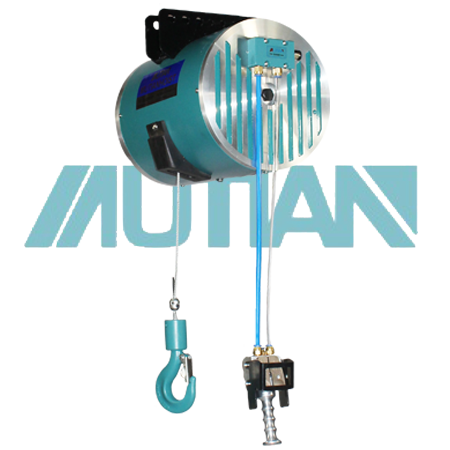 中文版
中文版



Welcome to contact us by phone:0086-0312-7969888
Testing pneumatic balancer hoists is essential to ensure their safety, reliability, and compliance with relevant standards. Several tests are typically conducted during the manufacturing process and periodically during the hoist's lifespan. Some of the common tests for pneumatic balancer hoists include:
Load Testing: Load testing involves subjecting the hoist to its maximum rated load capacity to verify that it can safely lift and handle the specified weight without failure or deformation.
Functional Testing: Functional testing evaluates the hoist's operation under various conditions, including lifting, lowering, and maneuvering loads. This ensures that all control mechanisms, pneumatic components, and safety features are functioning correctly.
Overload Testing: Overload testing involves applying loads exceeding the hoist's rated capacity to assess its ability to withstand excessive stress and to determine if overload protection mechanisms are effective.
Stability Testing: Stability testing examines the hoist's stability during lifting and lowering operations, ensuring that it remains balanced and secure throughout the process.
Durability Testing: Durability testing simulates long-term usage conditions by subjecting the hoist to repetitive lifting cycles and environmental factors to assess its reliability and longevity.
Noise and Vibration Testing: This testing evaluates the level of noise and vibration produced by the hoist during operation to ensure compliance with noise regulations and to assess operator comfort and safety.
Safety Testing: Safety testing verifies that all safety features, such as emergency stop controls, overload protection, and fail-safe mechanisms, are functioning correctly to prevent accidents and injuries.
Environmental Testing: Environmental testing exposes the hoist to various environmental conditions, including temperature extremes, humidity, dust, and corrosive substances, to assess its performance and durability in different operating environments.
Electrical Testing (if applicable): For pneumatic hoists with electrical components, electrical testing ensures that all electrical systems, including wiring, switches, and controls, meet safety standards and regulatory requirements.
Certification Testing: Depending on the jurisdiction and industry requirements, pneumatic balancer hoists may need to undergo certification testing by authorized third-party organizations to validate compliance with relevant safety standards, such as ANSI/ASME or European Machinery Directive (CE).
By conducting these tests systematically, manufacturers can ensure that pneumatic balancer hoists meet high-quality standards, perform reliably, and provide safe operation for users.
X